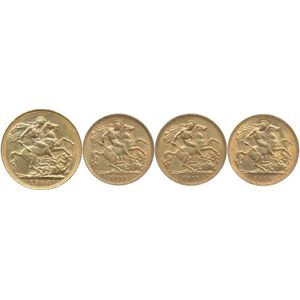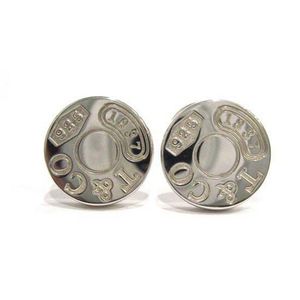Japanese Bronze Tsubas: Edo & Meiji Period
You must be a subscriber, and be logged in to view price and dealer details.
Subscribe Now to view actual auction price for this item
When you subscribe, you have the option of setting the currency in which to display prices to $Au, $US, $NZ or Stg.
- Bronze - An alloy of copper and tin, traditionally in the proportions of about 9 parts of copper to 1 part of tin.
The discovery of bronze in Western Asia in the 4th century enabled people to create metal objects which were superior to those previoulsy possible because of its strength and hardness, and it has been used throughout the world for weapons, coins, tools, statuary and other decorative items.
It is very fluid in a molten state, and its hardness, strength when set, and non-corrosive properties makes it most suitable for casting sculpture. - Edo Period, Japan - The Edo period in Japan lasted from 1603 to 1868. During this time, Japan was ruled by the Tokugawa shogunate, a military government led by the Tokugawa family. The Edo period is characterized by a period of relative peace, stability, and economic growth, as well as by the development of a distinctive culture and society.
During the Edo period, the capital of Japan was moved from Kyoto to Edo (modern-day Tokyo), and the country became increasingly isolated from the rest of the world. The shogunate implemented strict policies to maintain control, including the restriction of foreign trade and travel. However, despite this isolation, the Edo period saw significant cultural and artistic development, including the emergence of the ukiyo-e woodblock print tradition, the growth of Kabuki theater, and the flourishing of a vibrant merchant culture.
The Edo period ended with the Meiji Restoration of 1868, which saw the collapse of the shogunate and the restoration of imperial rule.
This item has been included into following indexes:
Visually similar items

Pair of Chinese Swatow dishes. Chrysanthemum design & gritty bases. Cracks to 1. Provenance: Australian collector. Diameter 18 cm (each)

A collection of three English 'Orientalist' design plates, circa 1880 and later comprising a rare Bates, Gildea & Walker 'Hizen' pattern d plate, circa 1880, a Doulton Burslem oriental pattern plate, and an unmarked plate with an underglaze blue design of

Gold Coins: Perth Mint, St. George reverse sovereign Kevii 1904, Half-sovereigns 1911 x 2 and 1915, condition varied (agw 0.588 troy ounces).

A pair of Tiffany & Co sterling silver 1837 cuff links, circular in shape with T & Co 925 1837 engraved to top, with original pouch, Wt 16.5 grams
